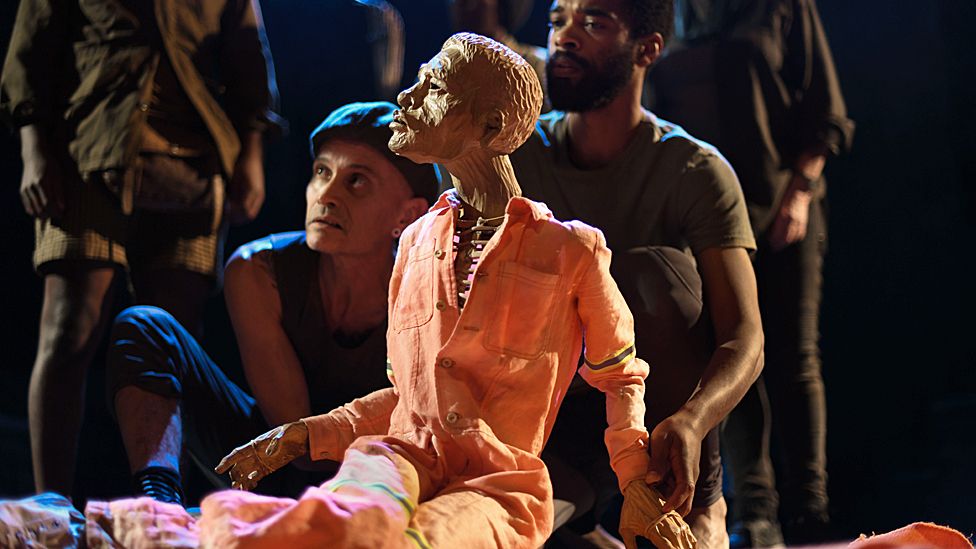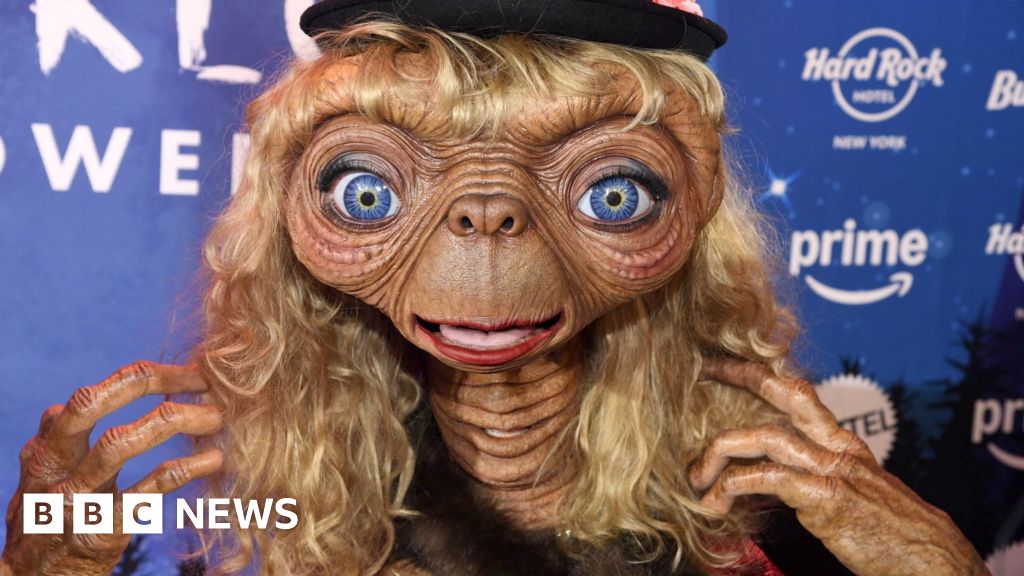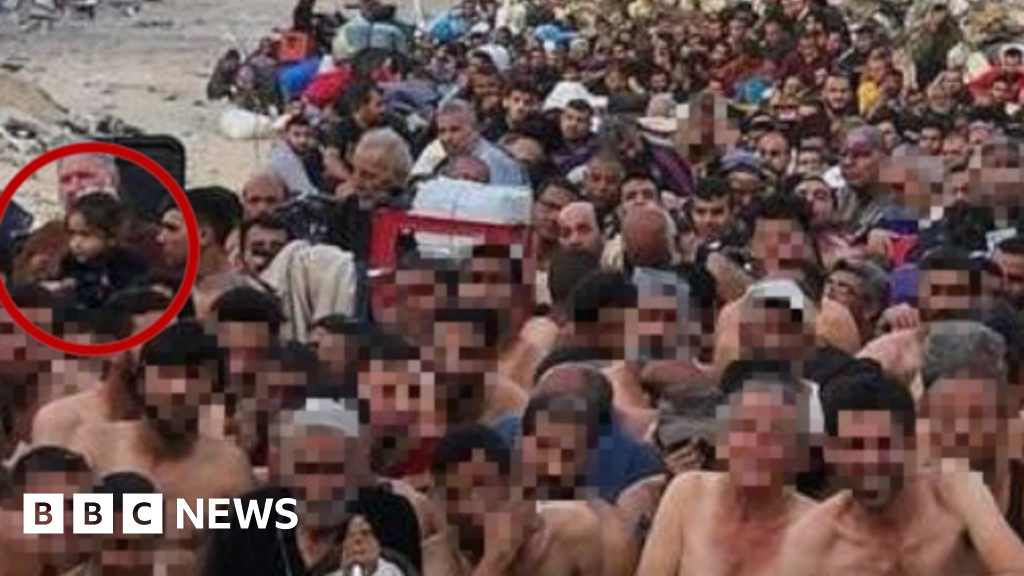ARTICLE AD BOX
 Image source, Fiona McPherson/Courtesy Baxter Theatre
Image source, Fiona McPherson/Courtesy Baxter Theatre
World-renowned South African puppeteer Adrian Kohler has realised a 30-year-long ambition to make a novel by Nobel laureate JM Coetzee into a puppet play.
It follows a collaboration with Lara Foot, one of South Africa's leading playwrights and directors, who has adapted for the stage The Life and Times of Michael K, which also happens to be Kohler's favourite Coetzee book.
The novel is set in apartheid South Africa amidst a fictional civil war and the horrors of a dystopian world.
Michael K is born into poverty with a cleft lip and judged to have, in Coetzee's words, "a mind that was not quick". His mother, Anna, sends him away to an institution for "variously afflicted and unfortunate" children.
"Michael K is very much an outsider, and that's why having him as a puppet works so well," Kohler tells the BBC.
"Casting him and his mother as puppets - while all of the other characters that impinge on him and her are played by humans - allows you to create that kind of distance - of a character who is so much in his own being," he adds.
Image source, Fiona McPherson/Courtesy Baxter Theatre
Image caption,The Life and Times of Michael K is set in a dystopian world
When Michael K grows up, he becomes a gardener and lives a simple, isolated life.
Michael K is "essentially an individual who sets an example in terms of how little we need to survive happily", Foot says.
When his mother becomes ill and unable to walk, she wants to return to the rural home where she was born.
So Michael builds a handcart for her to travel in - and they set off from Cape Town through the Karoo semi-desert.
Image source, Fiona McPherson/Courtesy Baxter Theatre
Image caption,Michael K's mother dies on the way home
Anna dies on the way. Michael carries on the journey with her ashes.
But he has to contend with being forced into a work camp, the loss of basic individual freedoms - and soldiers and rebels who try to force him to pick sides in a raging conflict.
"I think this resonates with all of us in terms of: what is our essence, and where do we want to be in the world?" Foot tells the BBC.
"This is especially so in the world today, where there are so many displaced people looking for a home or looking for a little bit of land. In Michael's case - to become a gardener, to grow vegetables."
The Life and TImes of Michael K makes its UK premiere on 3 August and runs until 27 August at the Edinburgh Fringe - one of the world's biggest performing arts festivals.
Image source, Fiona McPherson/Courtesy Baxter Theatre
Image caption,The play is being staged at the Edinburgh Fringe
The cast includes some of South Africa's acting legends, including Sandra Prinsloo, Andrew Buckland and Faniswa Yisa.
The production also uses performance, music and film.
"Partly so that we could see these beautiful puppets that Adrian carved up on a big screen, and partly so that we would understand the landscape of this journey and the beautiful loneliness of the Karoo in South Africa," Foot says.
"It's a really magnificent story for the stage, for theatrical expression," she adds.
Image source, Fiona McPherson/Courtesy Baxter Theatre
Image caption,Lara Foot enjoys puppetry because puppets can do what humans can't, like fly
The puppets are made by the Handspring Puppet Company, which was co-founded in 1981 by Kohler and his husband Basil Jones.
In 2021, they built Little Amal, a 12ft (3.7m) puppet that represents a young Syrian refugee girl and has become a worldwide symbol of hope and compassion for refugees.
"A puppet is a figure that is only manipulated into life by the mind and by the puppeteer," Jones says.
"We are puppeteers because we love the way an audience's imagination is provoked by the conceit of the moving figure of the puppet that imitates and, perhaps, flatters life - by trying to be alive," he adds.
Kohler has been immersed in puppetry and woodworking since he was a child. He used to build puppets with his mother, an amateur puppeteer, and his father, a yacht builder and cabinet maker.
Image source, Fiona McPherson/Courtesy Baxter Theatre
Image caption,Adrian Kohler has been interested in woodwork since childhood
Jones, on the other hand, hated puppets at first. But that changed when Kohler bought "an incredibly elegant, beautifully painted puppet".
It was a Bamana puppet from Mali - animals, fantastic creatures and characters from village life that have been used for centuries in theatre to comment on social and political life.
"I then understood that puppets weren't only Punch and Judy and the Muppets," Jones tells the BBC.
"That there's an authentic ancient African tradition and a vast horizon of puppetry that had been unexplored."
Handspring is famous for its lifelike, life-size puppets - like the horses in the international hit War Horse. And for reinventing the art of puppetry - through technical innovations and what they call "emotional engineering".
"I think we're the first group that really started talking about breath as an essential part of puppetry," Jones says.
Image source, Sandra Then/Courtesy Baxter Theatre
Image caption,The puppet is particularly articulate and can walk in the air, Kohler says
"Gradually it became the fundamental thing behind our movement philosophy."
The horses in War Horse, a play about the bond between a horse and a farm boy separated in World War One, are spellbindingly convincing. In the way they move - especially the ears that reveal the horses' emotions, the noises they make and how they breathe.
Unlike those in War Horse, the Michael K puppet is not life-size - deliberately so "to increase the visual tension between the puppet and the human actors," Kohler says.
"He's a pretty articulate puppet. He can walk in the air, levitate out of a scene and he's able to kind of fly against the story as it unfolds - against the war that is surrounding him - in a way that wouldn't be possible if he were a human."
In the tradition of the Bunraku puppeteers of Japan, the Michael K puppets are brought alive by the energies of three people. It is detailed, precise work as puppeteers sort out timings and movements.
On stage the actors cannot talk to each other or make eye contact with the audience - instead the eye contact and breathing is always with the puppets.
Image source, Fiona McPherson/Courtesy Baxter Theatre
Image caption,Actors can't talk to each other on stage
"It is an intimate, highly sensitised form of performance that goes into a space of a kind of sacredness," says Roshina Ratnam, the puppeteer who directs a goat and the head of Michael K's mother.
She works with Faniswa Yisa, who is her voice and supporting hand puppeteer, and Nolufefe Ntshuntshe, who is her feet.
"You can make magic and there is a suspension of disbelief," Ratnam says.
"Audiences really gasp when the puppet dies - and I love being able to elicit that emotion for something that we essentially know is a piece of wood."
Ratnam first picked up a puppet 12 years ago - when she was cast as the lead in a play about Sadoko Sasaki, a Japanese girl who contracted leukaemia after surviving the atomic bombing of Hiroshima.
Ratnam fell in love with puppetry - and she wants others to be able to experience that same joy.
As well as directing and performing, she is also the head of communications with the South African Puppetry Association, which aims to strengthen professional puppetry throughout the country.
Image source, Fiona McPherson/Courtesy Baxter Theatre
Image caption,Puppetry is being popularised in South Africa
It has a particular focus on reaching underprivileged communities and artists - and has run training courses for young black South Africans on how to build puppets from scratch and use puppetry in film and TV.
The Life and Times of Michael K production is the first time that Foot has directed puppets - and "to give a truthfulness to the life of the puppets was a huge challenge that took time and a lot of care", she says.
"But one is allowed to be very creative and quite filmic when creating the scenes - because puppets can do what humans can't do. They can fly, for instance. And that is the delight of puppetry."
Penny Dale is a freelance journalist, podcast and documentary-maker based in London
Images subject to copyright
More on puppetry in Africa:

 1 year ago
52
1 year ago
52








 English (US)
English (US)